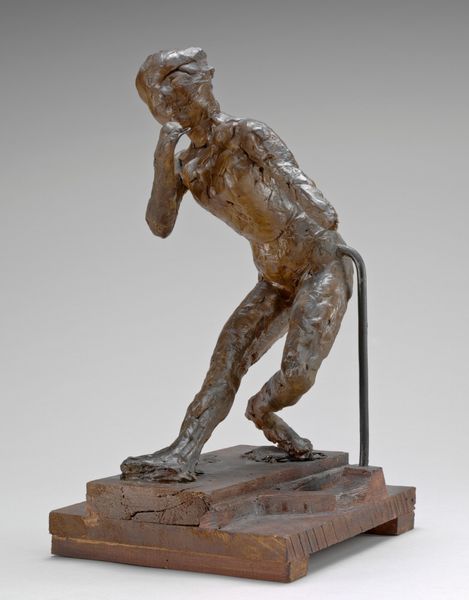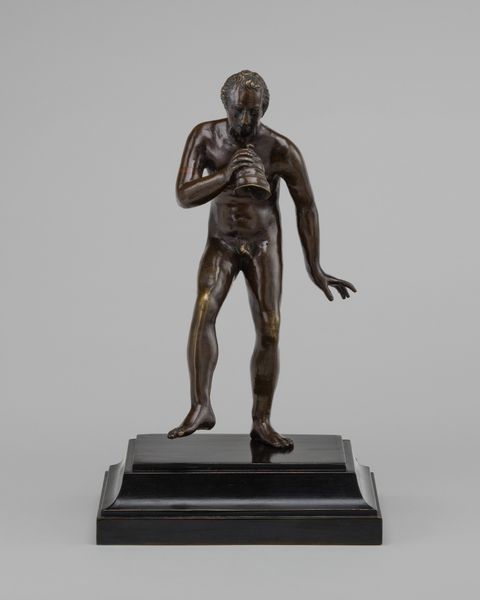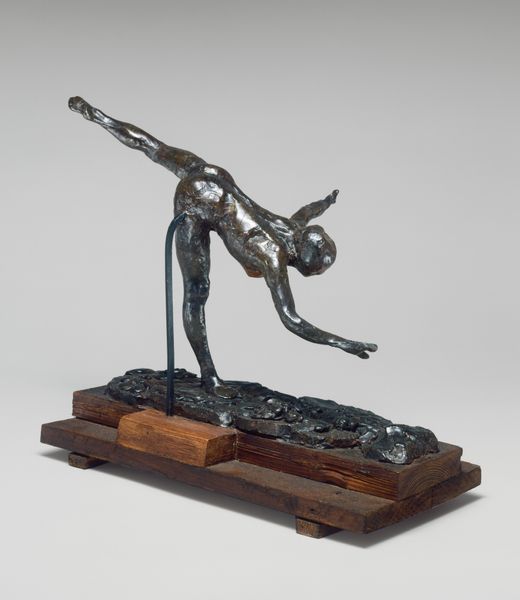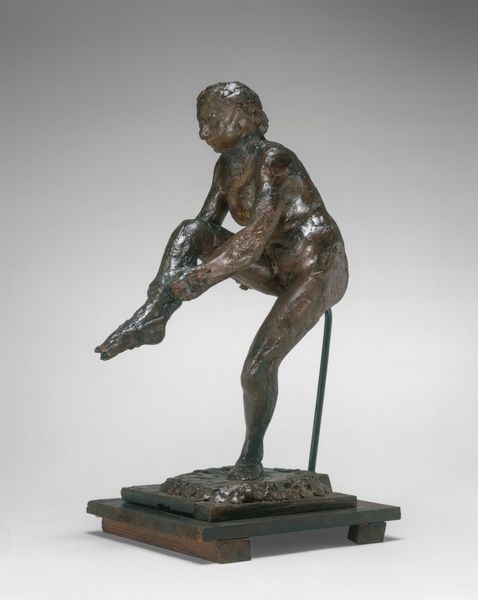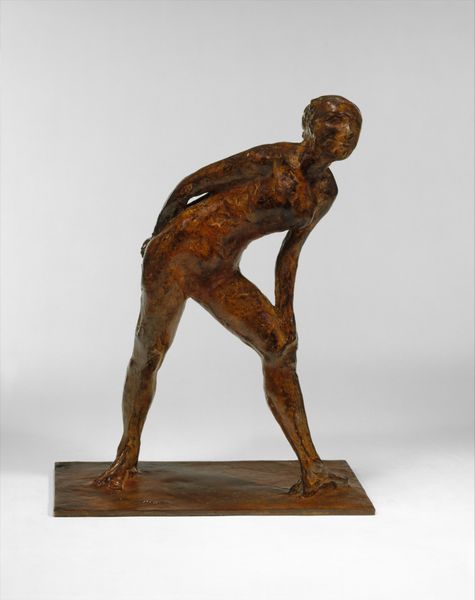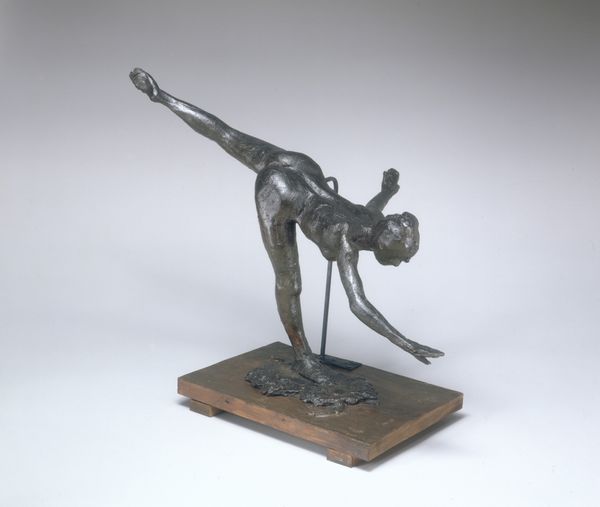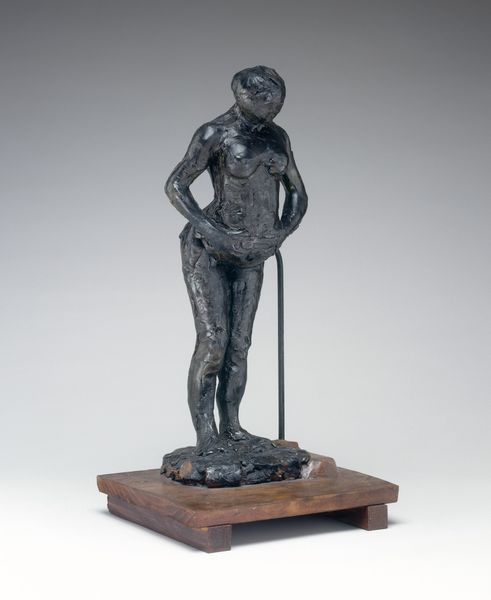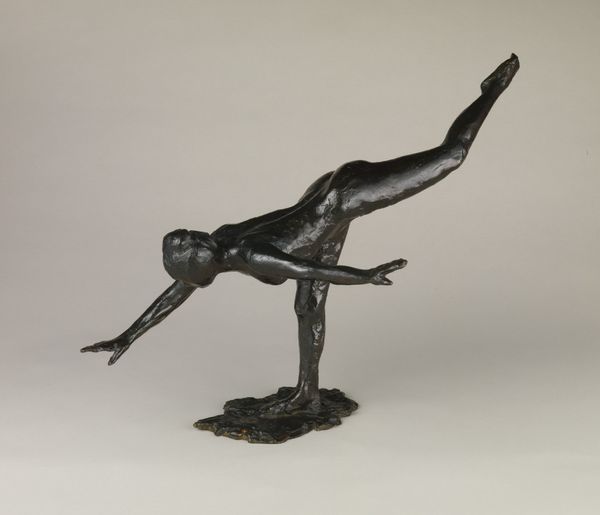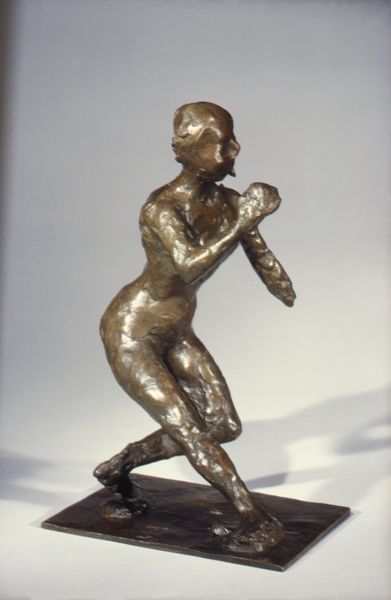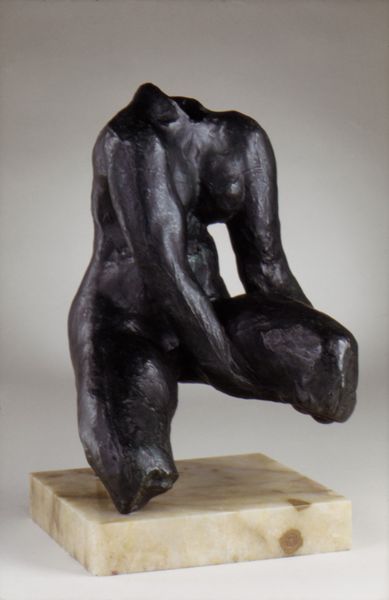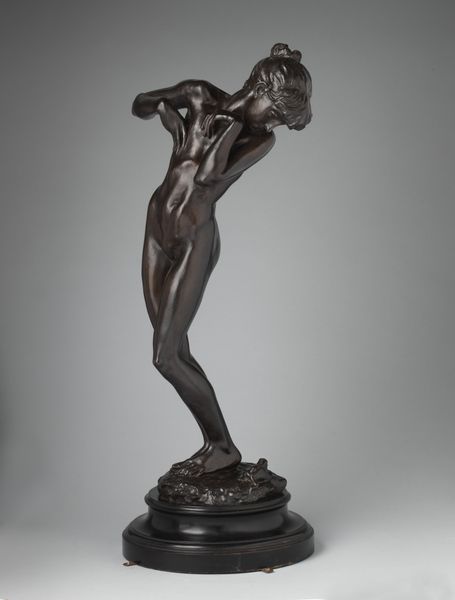
bronze, impasto, sculpture
#
portrait
#
sculpture
#
bronze
#
figuration
#
impasto
#
sculpture
#
post-impressionism
Dimensions: overall without base: 35.5 x 21.6 x 40 cm (14 x 8 1/2 x 15 3/4 in.)
Copyright: National Gallery of Art: CC0 1.0
Edgar Degas's bronze sculpture, "Dancer in the Role of Harlequin," embodies the artist's fascination with the world of ballet in late 19th-century France. Degas was captivated by the Paris Opera Ballet. It represented a unique blend of artistic expression, social hierarchy, and institutional control. The dancers, often from working-class backgrounds, navigated the complex social dynamics of the opera house, which served as both a stage for their performances and a space for social climbing. Degas's choice to depict a dancer in the role of Harlequin is significant. The Harlequin character, traditionally a mischievous servant, allowed the artist to explore themes of identity, performance, and social mobility. To fully understand Degas's work, we turn to the archives of the Paris Opera, the records of dance academies, and contemporary accounts of ballet culture. Art history thrives on this kind of contextual research, revealing the intricate connections between art and the world it reflects.
Comments
No comments
Be the first to comment and join the conversation on the ultimate creative platform.
